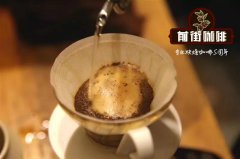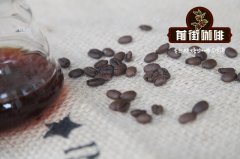Yemeni mocha coffee sunbathing Mattari brewing water temperature how to drink Yemeni mocha coffee

Professional coffee knowledge exchange more coffee bean information please follow the coffee workshop (Wechat official account cafe_style)
The mention of Yemeni coffee immediately reminds people of the magical sun-dried beans that taste thick and full, with layers of fantastic wild aromas like fermented tea, as mysterious and elusive as the country in Yemen.
Yemen is located in Ethiopia, across the Red Sea from East Africa, and is the highest quality producer of natural suntan coffee. The coffee produced in Yemen is called mocha beans. In fact, Mocha is an export port of coffee. In the early days, sun beans including nearby East Africa were exported from the port of Mocha to all parts of the world, so the sun beans produced in Ethiopia, including Yemen and East Africa, are collectively referred to as moka beans.
The natural sun treatment in Yemen is to manually harvest fully mature coffee beans and directly place the newly harvested coffee beans in a special coffee drying yard or in their own compacted soil front yard to receive the sun. During the sun drying period with Taiwan, rice is usually turned over with a wooden rake to keep each bean evenly dried. After about 20 days of coffee drying, remove the outer pulp and peel from the coffee beans. Yemeni coffee has a rich, complex, mellow, strong fermentation flavor and low acidity, coupled with the uncertainty of Yemeni coffee (when it rains in the season). It is not too much to call it the most special coffee in the world.
Yemeni coffee grows in steep terrain with little rainfall, poor land and insufficient sunshine. Such unique and difficult conditions that are not conducive to coffee growth have given birth to the Yemeni mocha, which can not be replaced by the coffee world. The main producing area of Yemeni coffee is Sanani, Matari and Ismaili.
This batch of coffee is from Matari, which varies in size and color and looks like small peas and empty shell bad beans (pictured in Boulogg), raw beans have a fermented wine aroma, unlike Ethiopian red cherry coffee with eye-catching strawberry sandwich biscuit aroma, but low-key, calm and full flavor of fermented wine is unmatched by sun beans in other countries.
There are many empty shell beans in the Yemeni mocha raw beans with different sizes and colors, which is the characteristic of the Yemeni mocha and the reason for its uncertain fragrance.
Shallow baking City (fragrance): when the coffee beans have not been ground, there is an aroma of peanuts after grinding with the aroma of fairy Hawthorn plum fruit wine, there is a hint of fermentation during the cooking process, the taste is changeable and complex, a little bit of gluten acid appears at the end of the mouth, the aftertaste is long, Shengjin is sweet and round with the feeling of Middle East milk tea for a long time, and there is sweet malt at the bottom of the cup. The light-baked Yemeni mocha is still constantly changing. It is suggested that after baking for 14 days, the fermented flavor of complex game is the best.
Re-baking (general C): it is very obvious that the Yemeni sun beans are like a soft wine, the beans contain the sweetness of cocoa chocolate, the whole style changes to gentle and introverted, but there will be an unexpected aroma at any time. The mellow aftertaste of mocha (fermentation) is symmetrically and continuously produced in the mouth.
Analysis of coffee brewing in Yemen
Hand punch reference
Stew with V60 filter cup, 15 grams of powder and 30 grams of water for 35 seconds, extract at 89-90 degrees Celsius, 1:15, grind small Fuji 3.5 in medium and fine, cut off water in 140ml for the second time, and then slowly inject water until the water drops, the speed is uniform, the water level should not be too high, inject water again until 225ml stops, extraction time 2:00 seconds--
When brewing, it quickly brings out the attractive aroma of fruit and spices, and feels the chocolate and creamy texture after the entrance.
Related recommendation: what is mocha coffee? Yemeni mocha-Matali sun beans are the real mocha coffee beans in Yemen
Important Notice :
前街咖啡 FrontStreet Coffee has moved to new addredd:
FrontStreet Coffee Address: 315,Donghua East Road,GuangZhou
Tel:020 38364473
- Prev

What is the altitude of Yemen mocha coffee beans? what are the taste characteristics of Yemeni mocha coffee beans?
Professional coffee knowledge exchange more coffee bean information Please follow the coffee workshop (Wechat official account cafe_style) Yemen, famous for its frankincense or spice trade, is the origin of the earliest coffee mocha in the world. Yemen, which retained its lifestyle thousands of years ago, and Ethiopia, which is across the sea from Yemen, also sells coffee through the port of Mocha, so Ethiopia
- Next

Introduction to the characteristics of Yemeni mocha coffee beans
More information on coffee beans Please follow Coffee Workshop (Wechat official account cafe_style) Yemen mocha: Yemeni mocha is one of the oldest coffees in the world, but until recently, Yemeni mocha has come to be regarded as one of the best and most delicious coffees in the world. Mocha coffee, which has a long history, is synonymous with coffee with its unique aroma and acid.
Related
- Beginners will see the "Coffee pull flower" guide!
- What is the difference between ice blog purified milk and ordinary milk coffee?
- Why is the Philippines the largest producer of crops in Liberia?
- For coffee extraction, should the fine powder be retained?
- How does extracted espresso fill pressed powder? How much strength does it take to press the powder?
- How to make jasmine cold extract coffee? Is the jasmine + latte good?
- Will this little toy really make the coffee taste better? How does Lily Drip affect coffee extraction?
- Will the action of slapping the filter cup also affect coffee extraction?
- What's the difference between powder-to-water ratio and powder-to-liquid ratio?
- What is the Ethiopian local species? What does it have to do with Heirloom native species?

